- Home
- Stephen Baxter
Ring xs-4 Page 7
Ring xs-4 Read online
Page 7
“By passing through the wormhole,” Louise said, “it was possible to travel back and forth through time. Thus, Poole had used wormhole technology to establish a bridge across fifteen hundred years, to the future.”
Mark pulled at his lips. “We all know what became of this great time bridge. But — I’ve never understood — why did Poole build it?”
The Virtual spoke, his voice tired, dry — so familiar that Louise felt her heart move. Michael Poole said, “It was an experiment. I was more interested in proving the technology — the concepts — than in the final application. But — ”
“Yes, Michael?” Louise prompted.
“I had a vision — a dream perhaps — of establishing great wormhole highways across time, as well as across space. If the technology is possible, why not? What power might be afforded to the human species with the opening up of such information channels?”
“But the future didn’t welcome this great dream,” Uvarov said drily.
“No, it didn’t,” Virtual-Poole said.
The floor of the Hermit Crab’s lifedome turned transparent; space-darkness washed across it in a sudden flood that made Milpitas gasp audibly.
Louise stood and looked down. There was space-emptiness beyond her feet; her eyes told her she was suspended above an immense drop, and she had to summon all her will not to stumble, weakly, back to her chair…
And then, belatedly, she registered what she was seeing: beneath the lifedome, and extending for hundreds of yards in every direction, was a floor of some broken, irregular, bloody material — a floor of (what looked like, but couldn’t possibly be) flesh.
Louise turned slowly around, trying to make out the geometry of what she was seeing.
The flesh-surface, bathed in sickly Jovian light, curved away from her in all directions; the “floor” was actually the outer surface of a sphere — as if the Crab were embedded in an impossible moon of flesh, perhaps a mile wide. If the Crab’s drive section still existed, it was buried somewhere deep inside this immense carcass. The clean metal lines of the GUTship’s spine — which connected lifedome to drive unit — were enveloped in a gaping wound in this floor of flesh.
Apart from this huge wound in the fleshy floor caused by the Crab (a wound which pooled with what looked un-nervingly like blood) there were a number of pockmarks in which metal glistened — weapons emplacements? — and others… eyes, huge, dimmed analogues of her own eyeballs.
There was a sense of suffering here, she thought: of pain, on an immense scale the agony of a wounded god.
She peered more closely at the nearest pockmark, trying to make out the nature of the device embedded there. But the image was little more than a sketch — a suggestion of form, rendered in shining chrome.
Virtual-Poole, with Mark, Uvarov and Milpitas, stood beside her. The Virtual studied the flesh landscape somberly. “The wormhole route to the future became a channel for invasion — by the Qax, an extraSolar species which had occupied the System by the time the bridge was established. You’re seeing here a reconstruction of one of the two Qax warships which came back through the wormhole. These are Spline — living creatures, perhaps even sentient — a technology unlike anything we’ve developed.”
Uvarov pointed to the sketchy surface of the Spline. “Your reconstruction isn’t so impressive.”
Virtual-Poole seemed more composed now, Louise thought — more Virtual, less Poole. She felt grateful for that. He said, “We know little about the Spline, save their name and gross form. I — Poole — with the help of the rebel humans from the occupation future, destroyed the invading Spline ships.” He peered down at the Crab’s spine, the huge, disrupted epidermis. “You can see how I — how he — rammed one of the warships, spearing it with the Crab’s GUTdrive. The warship was disabled — but not destroyed; in fact it was possible to take over some of the warship’s higher functions.
“I’m going to show you a reconstruction of the last few minutes of Michael Poole’s known existence.”
The sky-blue light around them started to shift, to slide over the equipment desks. Louise looked up. The Interface above the ship was moving gracefully across the sky; one triangular face, three miles wide, opened up -
— and, like some immense mouth, descended toward them.
Serena Milpitas said, “Lethe. We’re going through it, aren’t we? We’re going into the future.”
Louise looked at Poole. The Virtual gazed upwards, his eyes hardening with memory. “I drove the Spline into the wormhole. The wormhole had to be destroyed — the bridge to the future closed… That was my only goal.”
The triangular frame passed around the bulk of the Spline warship now; the lifedome shuddered — delicately, but convincingly. Blue-white flashes erupted all around the perimeter of the lifedome — damage inflicted on the flesh of the Spline, Louise guessed, by grazing collisions with the exotic-matter framework.
Suddenly they were inside the tetrahedral Interface — and the wormhole itself opened up before them. It was a tunnel, above the lifedome, delineated by sheets of autumn-gold light — and leading (impossibly) beyond the Interface framework, and arcing to infinity.
Louise wished she could touch Poole. This copy was closer to Michael Poole than any cloned twin; he shared Poole’s memories, his consciousness even. How must it be to relive one’s death like this?
Poole said, “The flashes in the wormhole throat represent the decay of heavy particles, produced in turn by the relaxing of shear energy in the curved spacetime walls of the wormhole, which — ”
Uvarov growled, “Skip the fairground ride; just tell us what happened. How did Poole destroy the wormhole?”
The Virtual turned his face toward Louise, his strong, aged features outlined by shuddering wormhole light. “The Spline ships had a hyperdrive, of unknown nature. I opened up my captive hyperdrive here — ”
The Virtual raised his hands.
The floor bucked beneath them. The wormhole was flooded with sheets of blue white light which raced toward them and down past the lifedome, giving Louise the sudden impression of huge, uncontrolled speed.
Poole shouted, “However the hyperdrive works, it must be based on manipulating the multidimensionality of space. And if so — and if it were operated inside a wormhole, where spacetime is already distorted…”
Now the sheets of light gathered into threads, sinuous snakes of luminosity which curved around the GUTship, sundering the spacetime walls.
Mark said, “So the hyperdrive made the wormhole collapse?”
“Perhaps. Or — ” Virtual-Poole lifted his simulated head to the storm of wormhole light.
The threads of light seemed to sink into the fabric of the wormhole itself. Defects — cracks and sheets — opened up in the wormhole walls, revealing a plethora of wormhole tunnels, a hydra-like explosion of ballooning wormholes.
The Hermit Crab, uncontrolled, plunged down one wormhole after another into the future.
The Crab, at last, came to Virtual rest.
The last wormhole mouth closed behind it, the stresses of its distorted spacetime fabric finally yielding in a gush of heavy particles.
The sky beyond the lifedome was dark — almost empty, save for a random scattering of dimmed, reddened stars. There was no sign of life: no large-scale structure, no purposeful motion.
The sudden flood of darkness was startling. Louise, looking up, shivered; she had a feeling of intense age. “Michael — you surely expected to die, in the destruction of the wormhole.”
“Yes… but as you can see — perhaps — the wormhole didn’t simply collapse.” He looked confused. “I’m a simulacrum, Louise; I don’t share these memories with Poole… But there is evidence. Some of the particles which emerged from the collapsing Interface, in our own time, were of much too high energies to have been generated in the collapse of a single wormhole.
“We think the impact actually created — or at any rate widened — more, branching wormholes, which carried the Crab
further into the future. Perhaps much further.
“We have simulations which show how this could happen, given the right form of hyperdrive physics — particularly if there were other cross-time wormholes already extant in the Solar System of the occupation era — perhaps set up by the Qax. In fact, the assumption that the branching did occur is allowing us to rule out classes of hyperdrive theory…”
The Virtual stood, and paced slowly across the transparent floor. “I was determined to close off the time bridge — to remove the threat of invasions from the future. But — I have to tell you — Superet thinks this was a mistake.” The Virtual twisted his hands together. “After all, we had already beaten off one Spline incursion. After Poole’s departure the study of the Qax incident became the prime focus of Superet. But because the wormhole is closed, Superet is reduced to inferring the truth about the future of our species from fragments, from indirect shards of evidence…”
Louise said, “You don’t believe it was a mistake, Michael.”
Poole looked haunted; again, Louise realized with an inner ache, his personality was conflicting with the programming imposed on it by Superet.
Mark peered up at the dying stars. “So. Did Poole survive?”
Louise said, “I’d like to think he did. Even just for a short while, so that he could understand what he saw.”
Milpitas lay back in her couch and stared up at the scattering of dim, reddened stars. “I’m no cosmologist… but those stars look so old. How far in time did he come?”
The Virtual did not reply.
Uvarov said, “Why have you shown us all this? What do you want?”
Virtual-Poole raised his thin arms to the desolate sky. “Look around you, Uvarov. Perhaps this is the end of time; it is certainly the end of the stars, of baryonic life. Perhaps there are other life forms out there, not perceived by us — creatures of dark matter, the non baryonic stuff which makes up nine-tenths of the Universe. But — where is man? In fact there’s no evidence of life at all here, human or otherwise.
“Superet has pieced together some fragments of the history of the future, from the rubble the Crab left behind. We know about the Xeelee, for example. We even know — we think — the name of the Xeelee’s greatest project: the Ring. But — what happens to us? What happens to the human species? What destroys us, even as it extinguishes the stars?
“And — Superet asks — is there anything we can do to avert this, the final catastrophe?”
Louise looked up at the dying stars. “Ah. I think I understand why I’m here. Superet wants me to follow the Hermit Crab. To take the Great Northern — not to Tau Ceti — but on a circular trip, like Poole’s Cauchy, to establish a time bridge. Superet wants to set up a way — a stable way — of reaching this era: the end of time.
“I get it. We’ve long since taken responsibility for the management of our planets — for the survival of their ecologies. Why, now, should we not take responsibility for our own long term survival as a species?” She felt like laughing. “Superet really does think big, doesn’t it?”
Milpitas sat on the edge of her couch. “But what does survival mean, on such timescales? Surely even with AS treatments, survival of individuals — of us into the indefinite future is impossible. What, then? Survival of the genotype? Or of the culture of our species — the memes, the cultural elements, perhaps, preserved in some form — ”
Uvarov looked fascinated now, Louise thought; all his impatience and irritability gone, he stared up at the Virtual rendition of the future hungrily. “Either, or both, perhaps. Speaking as a flesh-and-blood human, I share a natural human bias to the survival of the actual genotype in some form. The preservation of mere information appears a sterile option to me.
“But, whatever survival means, it doesn’t matter. Look beyond the dome. In this time to which Michael Poole traveled, nothing of us has survived, in any form. And that’s the catastrophe Superet is determined — clearly — we must work to avert.”
Louise pulled her lip. “If this is such a compelling case, why is Superet a small, covert operation? Why shouldn’t Superet’s goals motivate the primary activity of the race?”
Poole sighed. “Because the case isn’t so compelling. Obviously. Louise, as a species we aren’t used to thinking on such timescales. Not yet. There is talk of hubris: of comparisons with the Friends of Wigner, who came back through time evidently — to manipulate history, to avert the Qax occupation.” He looked at Louise wearily. “There isn’t even agreement about what you’re seeing here. I’ve shown you just one scenario, reconstructed from the Interface incident evidence. Maybe, it’s argued, we’re addressing problems that don’t really exist.”
Louise folded her arms. “And what if that’s true?”
Uvarov said, “But if there’s even the smallest chance that this interpretation is correct — then isn’t it worth some investment, against the possibility?”
Mark frowned. “So we use the Northern to fly to the future. The flight to Tau Ceti is only supposed to take a century.”
Poole nodded. “With modem technology, the flight of the Northern into the future should last no more than a thousand subjective years — ”
Mark laughed. “Poole, that’s impossible. No ship could last that long, physically. No closed ecology could survive. A closed society would tear itself apart… We don’t even know if AS treatment can keep humans alive over such periods.”
Louise stared up at the simulated stars. A thousand years? Mark was right; it was inhumanly long — but she had the feeling it wasn’t long enough…
Uvarov nodded. “But that is clearly why you have been chosen: Louise, the best engineer of the day, and with will enough to sustain immense projects. You, Mark Wu, a good social engineer — ”
“There are better ones,” Mark said.
“Not married to Louise.”
“Formerly married.”
Poole turned to Milpitas. “The proposal is that you, Serena, will make the Great Northern herself viable for its unprecedented thousand-year flight. And you, Dr. Uvarov, have a deep understanding of the strengths and limitations of the engineering of the human form; you will help Mark Wu keep the people — the species — alive.”
Louise saw Uvarov’s eyes gleam.
“I’ve no intention of going on this flight,” Mark said. “And besides, the Northern already has a ship’s engineer. And a damn doctor, come to that.”
Poole smiled. “Not for this mission.”
“Hold it,” Louise said. “There’s something missing.” She thought over what she had to say: relativistic math, done in the head, was chancy. But still… “Poole, a thousand-year trip can’t be long enough.” She looked up at the decaying stars. “I’m no cosmologist. But I see no Main Sequence stars up there at all. I’d guess we’re looking at a sky from far into the future — tens of billions of years, at least.”
Poole shook his head. His Virtual face was difficult to see in the faded starlight. “No, Louise. You’re wrong. A thousand-subjective-year trip is quite sufficient.”
“How can it be?”
“Because the sky you’re seeing isn’t from tens of billions of years hence. It’s from five million years ahead. That’s all — five megayears, nothing in cosmological time…”
“But how — ”
“More than time will ruin the stars, Louise. If this reconstruction is anything like accurate, there’s an agency at large — which must be acting even now systematically destroying the stars…
“And, as a consequence, us.”
Uvarov turned his face, expressionless, up to the darkling sky.
Virtual-Poole said, “We have reason to believe that even our own Sun is subject to this mysterious assault.” He stood before Louise. “Look, Louise, you know I don’t advocate cosmic engineering — I was the one who opposed the Friends of Wigner, who did my damnedest to close my own bridge to the future. But this is different. Even I can sympathize with what Superet is attempting here. Now can you s
ee why they want you to follow the Crab?”
The light show began to fade from the dome; evidently the display was over.
Poole still stood before Louise, but his definition was fading, his outlines growing blocky in clouds of pixels. She reached out a hand to him, but his face had already grown smooth, empty; long before the final pixels of his image dispersed, she realized, all trace of consciousness had fled.
Lieserl soared through her convective cavern, letting her sensory range expand and contract, almost at random.
She thought about the Sun.
For all its grandeur, the Sun, as a machine, was simple. When she looked down and opened her eyes she could see evidence of the fusing core, a glow of neutrino light beneath the radiative plasma ocean. If that core were ever extinguished, then the flood of energetic photons out of the core and into the radiative and convective layers would be staunched. The Sun was in hydrostatic equilibrium — the radiation pressure from the photons balanced the Sun’s tendency to collapse inwards, under gravity. And if the radiation pressure were removed the outer layers would implode, falling freely, within a few hours.
The Sun hadn’t always been as stable as this… and it wouldn’t always remain so.
The Sun had formed from a contracting cloud of gas — a protostar. At first the soft-edged, amorphous body had shone by the conversion of its gravitational energy alone.
When the central temperature had reached ten million degrees, hydrogen fusion had begun in the core.
The shrinkage had been halted, and stability reached rapidly. The fusion was restricted to an inner core, surrounded by the plasma sea and the convective “atmosphere”. The Sun, stable, burning tranquilly, had become a Main Sequence star; by the time Lieserl entered the convective zone, the Sun had burned for five billion years.
But the Sun would not remain on the Main Sequence forever.

 The Martian in the Wood
The Martian in the Wood THE H-BOMB GIRL
THE H-BOMB GIRL World Engine
World Engine Titan n-2
Titan n-2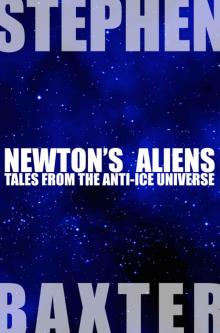 Newton's Aliens: Tales From the Anti-Ice Universe
Newton's Aliens: Tales From the Anti-Ice Universe Exultant
Exultant Manifold: Origin
Manifold: Origin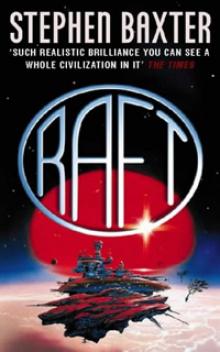 Raft xs-1
Raft xs-1 Bronze Summer n-2
Bronze Summer n-2 Transcendent
Transcendent Stone Spring
Stone Spring Coalescent
Coalescent The Medusa Chronicles
The Medusa Chronicles Origin m-3
Origin m-3 Silverhair tm-1
Silverhair tm-1 Ultima
Ultima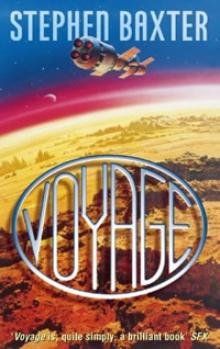 Voyage n-1
Voyage n-1 Xeelee: Endurance
Xeelee: Endurance Space m-2
Space m-2 Ring xs-4
Ring xs-4 Raft
Raft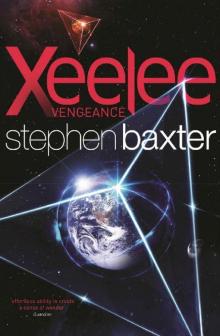 Xeelee: Vengeance
Xeelee: Vengeance Iron Winter n-3
Iron Winter n-3 Vacuum Diagrams
Vacuum Diagrams Longtusk tm-2
Longtusk tm-2 Proxima
Proxima Evolution
Evolution Titan
Titan Last and First Contacts (Imaginings)
Last and First Contacts (Imaginings) Emperor
Emperor The Massacre of Mankind
The Massacre of Mankind Starfall
Starfall Doctor Who - The Wheel of Ice
Doctor Who - The Wheel of Ice Longtusk
Longtusk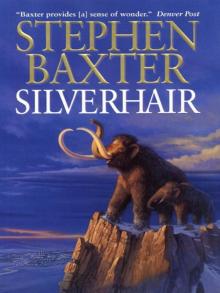 Silverhair
Silverhair Conqueror tt-2
Conqueror tt-2 Flood
Flood Flood f-1
Flood f-1 Emperor tt-1
Emperor tt-1 Moonseed
Moonseed Conqueror
Conqueror Timelike Infinity xs-2
Timelike Infinity xs-2 The Ghost Pit
The Ghost Pit Xeelee: An Omnibus: Raft, Timelike Infinity, Flux, Ring
Xeelee: An Omnibus: Raft, Timelike Infinity, Flux, Ring Weaver tt-4
Weaver tt-4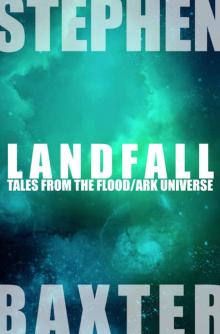 Landfall: Tales From the Flood/Ark Universe
Landfall: Tales From the Flood/Ark Universe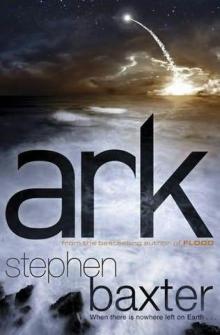 Ark
Ark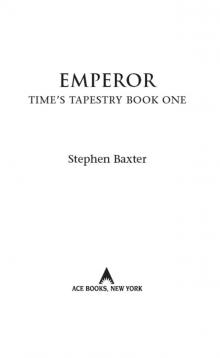 Emperor: Time’s Tapestry Book One
Emperor: Time’s Tapestry Book One Space
Space Icebones
Icebones Manifold: Space
Manifold: Space Navigator
Navigator Obelisk
Obelisk The Time Ships
The Time Ships Bronze Summer
Bronze Summer Resplendent
Resplendent Moonseed n-3
Moonseed n-3 Flux xs-3
Flux xs-3 Transcendent dc-3
Transcendent dc-3 Icebones tm-3
Icebones tm-3 Phase Space
Phase Space Anti-Ice
Anti-Ice Weaver
Weaver Voyage
Voyage Time m-1
Time m-1 Timelike Infinity
Timelike Infinity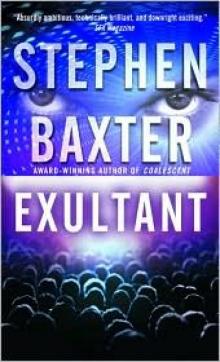 Exultant dc-2
Exultant dc-2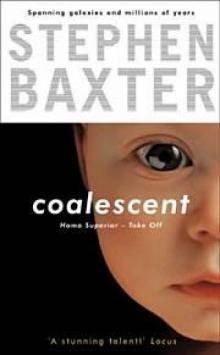 Coalescent dc-1
Coalescent dc-1 Navigator tt-3
Navigator tt-3